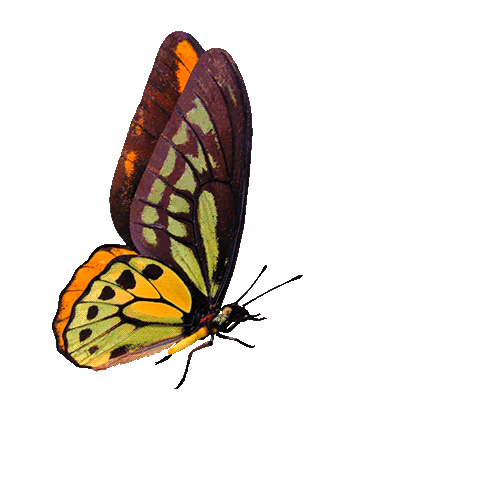
SUBIC, OLONGAPO - GENERAL INFORMATION
Welcome to Subic, Olongapo!
Subic Bay Freeport (SBF) is located southwest of the Luzon Island in the Philippines. The harbor is sandwiched by the Zambales Mountain Range at the east and the Subic Bay at the west and opens up to the South China Sea. It is northwest of the Bataan Peninsula and southwest of the Zambales Province. SBF is 110 kilometers north of Manila. Manila Bay and the Bataan Peninsula separate SBF from Manila. The mountain ranges around the Subic Bay area and the deep natural harbor provide excellent and protected anchorage.
Climate
-
Like the rest of the Philippines, the climate in SBF is tropical.
-
There are two seasons:
-
Dry, from November to May.
-
Rainy, from June to October.
-
The climate is without extremes. Average temperature is 80 degrees Farenheit or 26 degrees Celsius.
Population
-
-
The population in SBF is estimated at 3,000. Right next to SBF is Olongapo City with a population of approximately 194,260.
-
The adjacent provinces to SBF, Bataan and Zambales, have populations of 557,660 and 433,542 respectively as of 1995. Region III or Central Luzon, encompassing the provinces of Bulacan, Nueva Ecija, Tarlac, Pampanga, Bataan, and Zambales, has a combined population of 8.030 million as of May 1, 2001.
Environmental Protection
-
SBMA continues to pursue its environmental protection responsibilities.
-
The Authority has an Ecology Center that studies and monitors the preservation of the Subic Bay's natural resources and wildlife.
-
All development projects are required to submit Environmental Impact Assessment (EIA) studies to ensure compliance with existing environmental standards.
-
The Subic Watershed Forest Reserve (SWFR), located at the southern portion of the Zambales Biogeographic Zone, 160 km. by road northwest of Manila, is one of the ten priority sites of the National Integrated Protected Areas System (NIPAS), noted for its high biodiversity and endemism.
-
This lowland dipterocarp forest covers approximately 9,800 hectares, 3,000 hectares of which is closed canopy.
-
The forests were protected from over exploitation for more than 50 years while under the jurisdiction of the Americans during the US Naval Base period.
-
The SWFR lies entirely within the metes and bounds of the Subic Bay Freeport Zone (SBFZ). SBMA has administrative jurisdiction over these protected areas under the authority of Republic Act 7227 of 1992, and in a Memorandum of Agreement signed between the Department of Environment and Natural Resources (DENR) and the SBMA.
-
The preliminary results of the forest biodiversity survey revealed 745 plant species. Three of which are endangered while four others are potentially threatened.
-
Hence, the urgency of preserving the Subic Forest is highlighted.Ecologically and economically important tree species such as White Lauan, Apitong, Guijo, Palosapis are most dominant in Subic forest.
-
A rattan palm species previously found only in Mt. Arayat was discovered.At the southwest portion of the reserve is a well maintained network of paved roads which links two piers to a complex of 6 groups of earth-covered, concrete ammunition bunkers formerly known as the Naval Magazine.
-
These bunker groups are enclosed in fences. It is linked to the rest of the Freeport Zone by a two-lane road intersected by a narrower road leading to the municipality of Morong, Bataan. This area has been reserved for low-impact, eco and adventure tourism oriented development.
Tourist Activities & Attractions
APALIIN TRAIL
Hike through the trails of Apaliin and discover the wonders of the Subic Forest. Awe at the panoramic view from the tip of Apaliin Point, and enjoy the sight of Subic Bay on a banca ride back to the Central Business District.
BAT KINGDOM
Get mesmerized at Subic's Bamboo Bats and Flying Foxes. Over 10,000 fruitbats, the biggest of its kind in the world roost in the protected forest reserve of Subic along with the Bamboo bats, which are the smallest in the Philippines.
BAT HIGHWAY
Marvel at the beauty of the bats in flight as they pass through this narrow strip at the setting of the sun.
GRANDE ISLAND
-
Live through the grandeur of Grande and enjoy the amenities of a beach resort in an island setting. Enjoy a scenic ride to the island on board a motorized banca.
HILL 394
-
Subic's most popular peak takes you 394 meters above sea level and offers a spectacular view of the legendary Mount Natib and Subic Bay, in the northwest. Visit Hill 394 and let its beauty speak for itself.
Pamulaklakin Forest Trails / Pastolan Aeta Village
Take part in the Ecology Tour and trek inside the forests of Subic with the help of a native guide. Immerse yourself in the culture of the Aetas. Educate yourself in the various types of medicinal plants. Camp in the heart of the forest or simply have a unique picnic in the deep parts of the jungle.
REDONDO BEACHES
Behold the beauty of this undeveloped beach and explore the riches of a newfound land on the shores of the Redondo Peninsula.
TRIBOA BAY MANGROVE PARK
Drive through Subic's low-lying forest through the mangroves, via boardwalk to the Triboa Bay Marine Park. This bay is home to a nursery and breeding site for clams, crustaceans and fish.
SUBIC BAY'S FLYING FOXES
-
This camp of over 10,000 fruit bats, readily seen at the Subic Bay Freeport, is one of the last large bat colonies of its kind.
-
Found only in the Philippines, the Golden Crowned Flying Fox (Acerodon jubatus) and the Philippine Giant Fruit Bat (Pteropus vampyrus lanensis) are the largest bats in the world, with wingspans up to 2 meters.
-
Bats such as these eat only plants and are critically important to the health of tropical forests in the Philippines.
-
By dispersing the seeds of forest fruits and spreading pollen between the forest flowers they visit, fruit bats maintain and restore forests by aiding in the reproduction of forest plants.
-
Many fruit crops important to people, such as durian, wild banana, and kapok, also rely on fruit bats for their reproduction.
-
Their cute, puppy-like faces add to their appeal.
-
Despite this, fruit bats are heavily hunted, and the loss of their forest homes has made many of these bats endangered with extinction.
SUBIC BAY'S BAMBOO BATS
-
The bamboo bat, Tylonycteris sp., is the smallest bat found in the Philippines.
-
With a total wingspan smaller than a child's hand length and weighing only about 2 grams, it is just slightly larger than the world's smallest bat.
-
Both of the world's two species of bamboo bats are found in the Philippines, and Subic Bay with its large bamboo forests is an important host to these bats.
-
They have flat skulls that allow them to easily enter the bamboo holes originally created by chrysomelid beetles.
-
Their suction cup feet make it easy to hang upside-down on the smooth inside of the bamboo.
-
Bamboo bats typically give birth to twins and roost in harems, meaning one mating male with many mating females and all their offspring.
-
Sometimes as many as 40 little bamboo bats may be found roosting together in a single bamboo chamber.
-
These bats emerge from their bamboo hide-away at dusk to feed on insects, especially termite swarms, and by dawn have already returned to their home. So, bamboo bats are best seen in the sky when the sun is setting. (Source WWF Subic)
reference:
http://www.travelph.com/resorts/Subic/
(https://mangroveecology.com/photo-gallery/subic-bay/)




Biodiversity



 |  |  |
|---|---|---|
 |  |  |
 |  |
















